Few things give a poker player as much pleasure as deep immersion in the game, which allows you to accurately guess the opponent's cards. It is even more pleasant when successful against a very strong opponent. In today's video, we'll see how the top two players did it in the 100k High Roller.
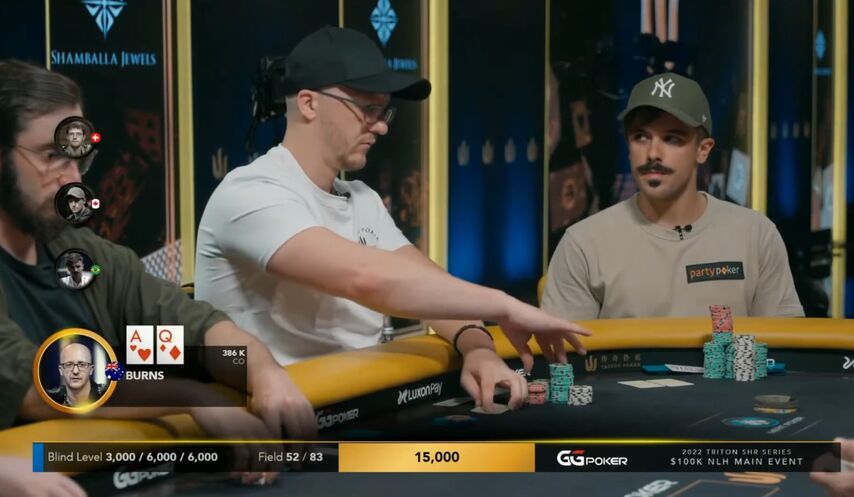
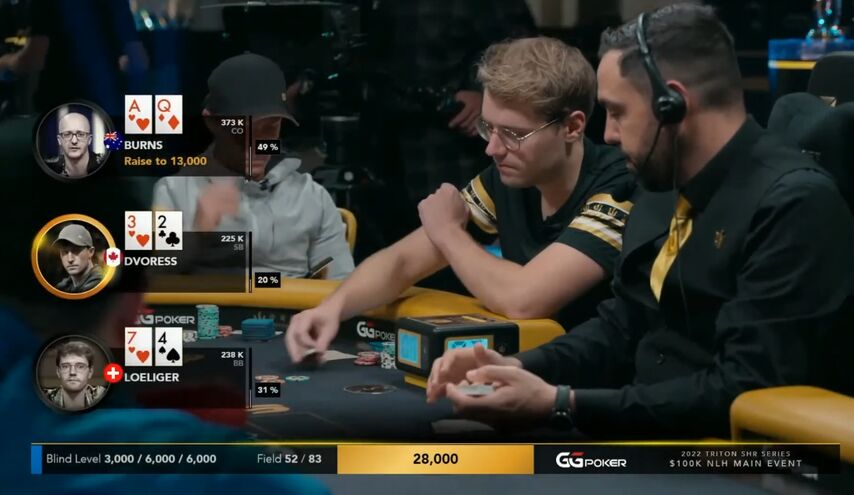
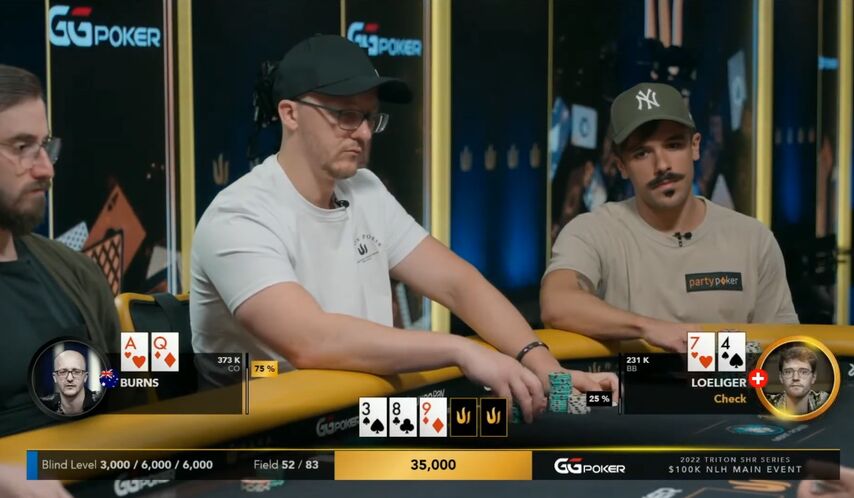
Kahle opens from the cutoff with AQo, and Linus defends the big blind loosely with 74o – the solver folds some of these combinations.
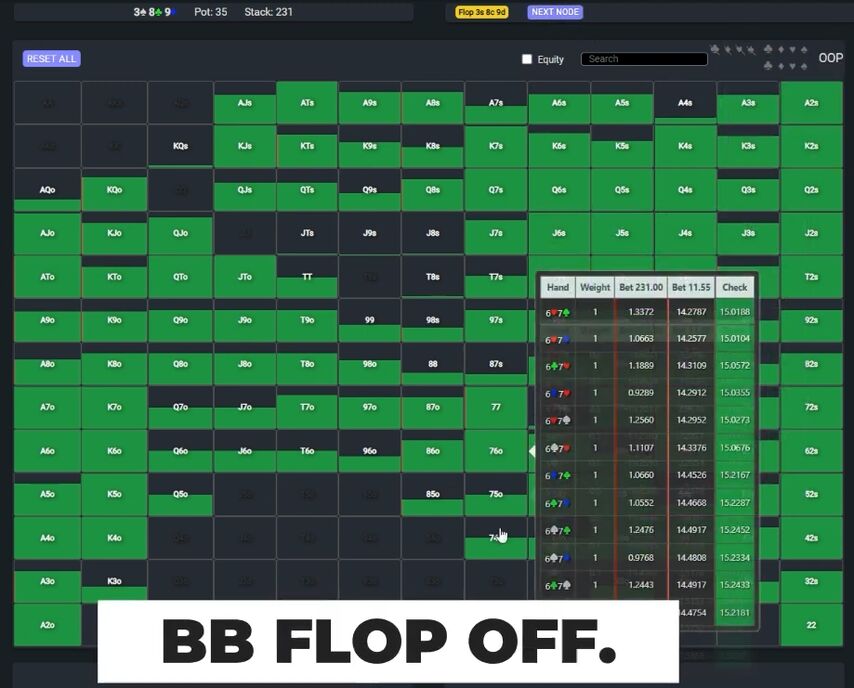
On the flop, Linus usually checks his entire range. Kahle can bet – he has a tighter and stronger range with more sets and overpairs. However, Linus has quite a few 9s, 8s, and 3s, including offsuit combinations, as well as many different draws with an open-ender or gutshot, and strong overcards like , , , , including backdoor flush draws. And the cutoff, given the presence of an ante, opens quite wide. Therefore, Kahle can't afford to c-bet his entire range and must check back quite a lot.
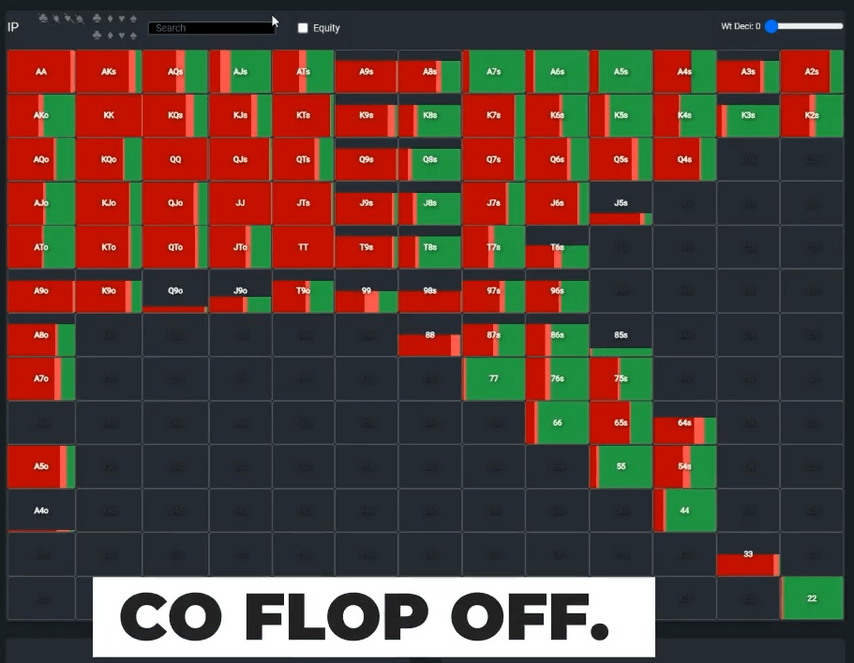
Against some opponents, a 100% c-bet might work, but Linus is a different species. Among his many hobbies is check-raising trash hands after calling in the big blind, so be careful when playing against him. Especially with hands that are interested in realizing equity. For example, AQo with a heart that doesn't block Linus's backdoor flush draws.
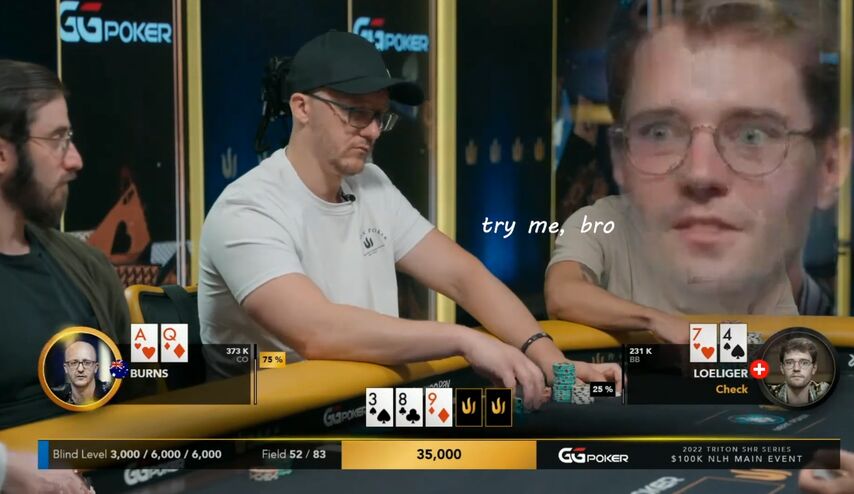
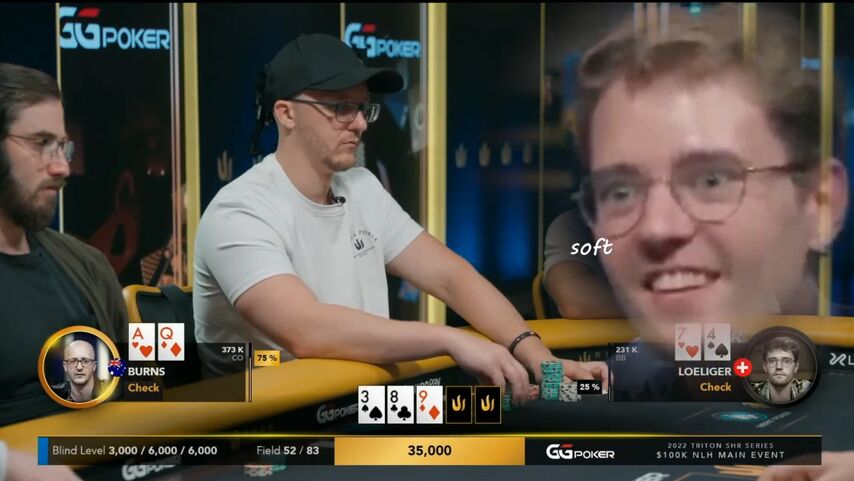
Turn
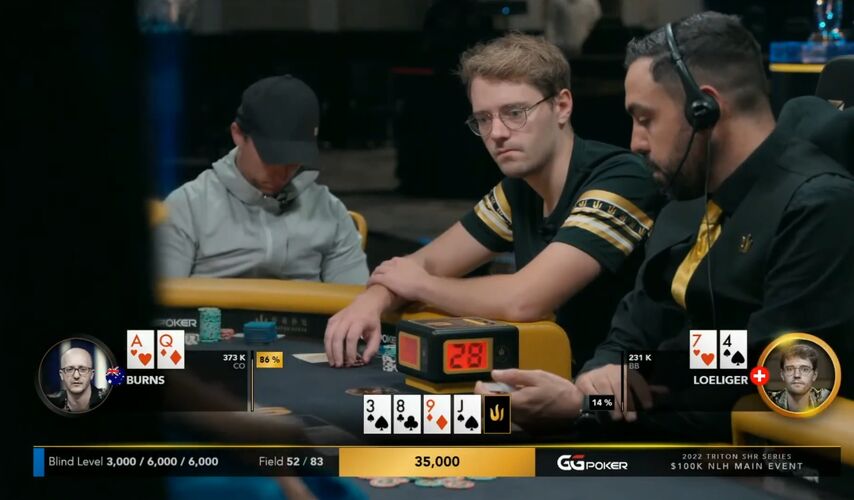
The jack gives Linus a gutshot and the Swiss, after some deliberation, makes a big bet of 25,000 into the 35,000 pot.
Curiously, the solver much more often chooses another sizing – blocking, 8,500. This is probably due to the dynamic board texture. As you know, a player's betting range in position is usually polarized, and when he checks behind, this makes his range both weaker and stronger at the same time: it cuts off most of the nuts which want to bloat the pot, and most of the complete trash that wants to take the pot. Taking advantage of average equity.
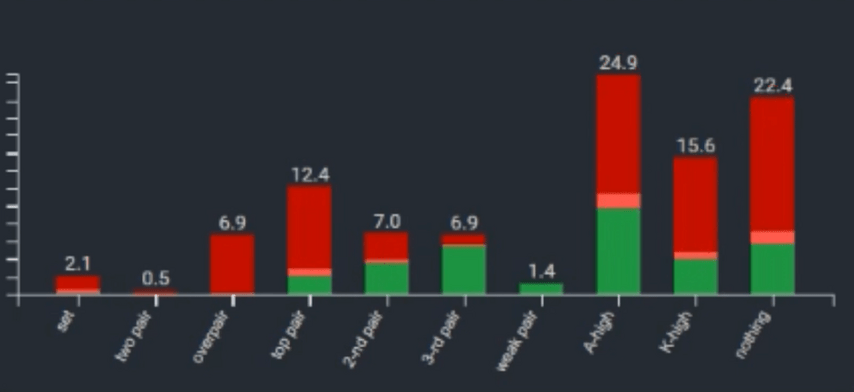
The aggressor's range after the flop is checked is what we call a capped range. However, a dynamic board that can potentially change the strongest combinations may be suitable for the aggressor. So, if the turn were to be an ace, many ace-containing hands that used to be medium-strength combinations with top pair would move into the category of the top of the range.
However, a jack is not an ace, and it cannot be said that it suits Kahle more than Linus. Rather, the jack gives Linus more nuts – straights, since Kahle would bet the flop with a straight draw like and . Also Linus has more , since Kahle has to c-bet this hand for value and protection.
It's important to note that the jack on the turn doesn't often improve the strength of many of the hands that Kahle could check the flop with – low pair, A-high, K-high, and junk. Almost all of them have become weaker and are more likely to fold even to a small bet.
By comparison, if the turn came a complete blank, say , the player's strategy in the BB would become much more polarized, with overbets prevailing over blockbets, since the deuce has little effect on the distribution of equity between players, and medium strength hands on the flop remained medium strength hands on the turn.
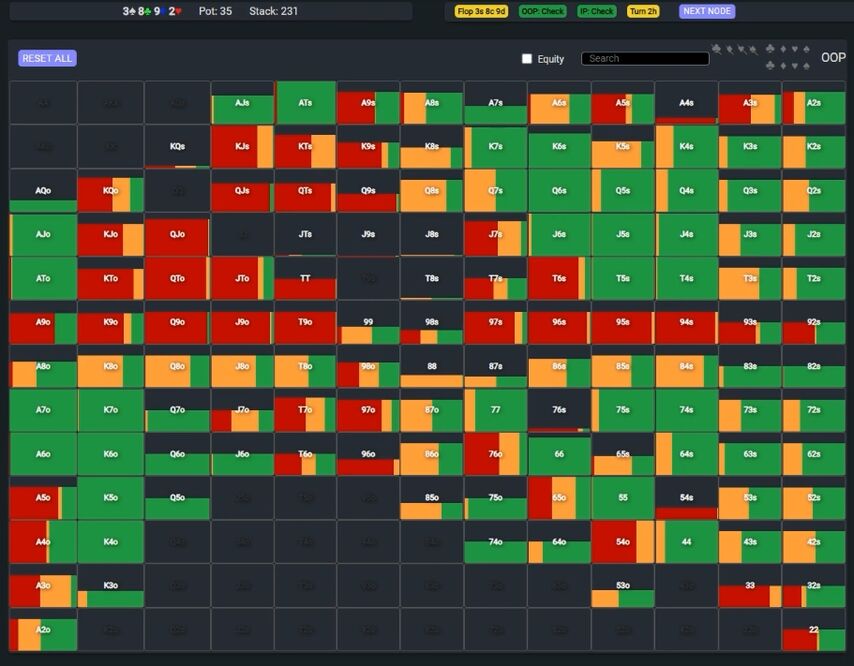
Whatever the case, Linus made a big bet. Technically, he has a gutshot, but the solver usually doesn't like to be aggressive with the draw to the "stupid" straight – even if we catch a ten on the river, we will often find ourselves dominated. So the solver prefers to check all 74o in this spot. For bluffing, it chooses high gutshots – all hands with a queen, as well as low gutshots with an overcard to the board – , .
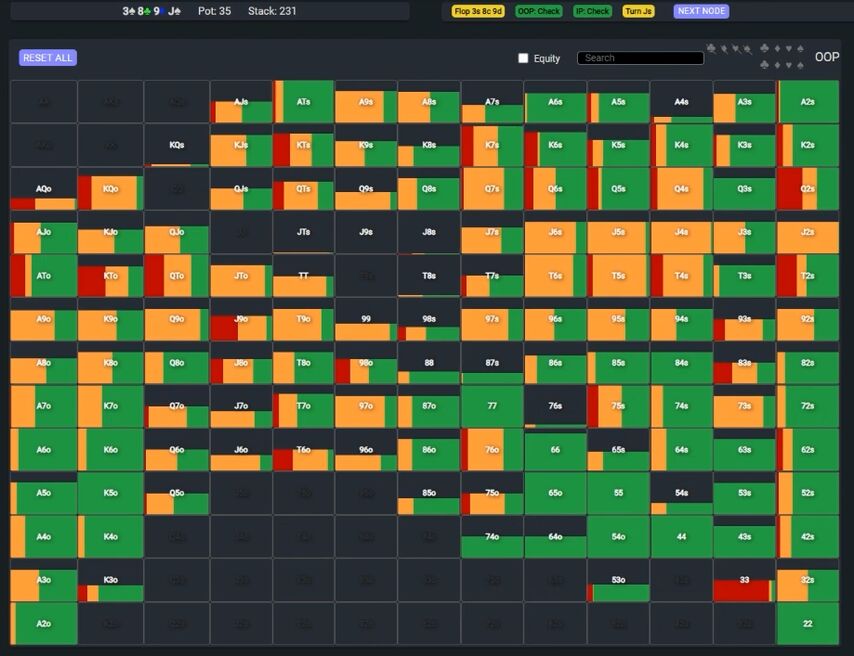
Perhaps Linus chose the hand and bet size as an exploit. He could consider Kahle's check range to be saturated with weak pairs and almost devoid of junk. Also, we cannot exclude that Linus uses only one sizing in such spots. Many players like to simplify their strategy, but you shouldn't get too carried away with this. The argument for simplification often boils down to the fact that the solver doesn't lose much EV by going from a two-sizing strategy to a one-sizing strategy. But by simplifying life for ourselves, we simplify it for the enemy.
See what happens to the cutoff strategy when the big blind simplifies his strategy on the turn and only chooses between checking and betting 25,000 into a pot of 35,000.

The big blind checked. Against an opponent's optimal strategy (with multiple sizings), the cutoff should play a complex mix with three major sizings at about the same frequency. Against the simplified strategy (in the center), it is much easier to play – you need to polarize, choosing between a check and a full pot.
Kahle calls.
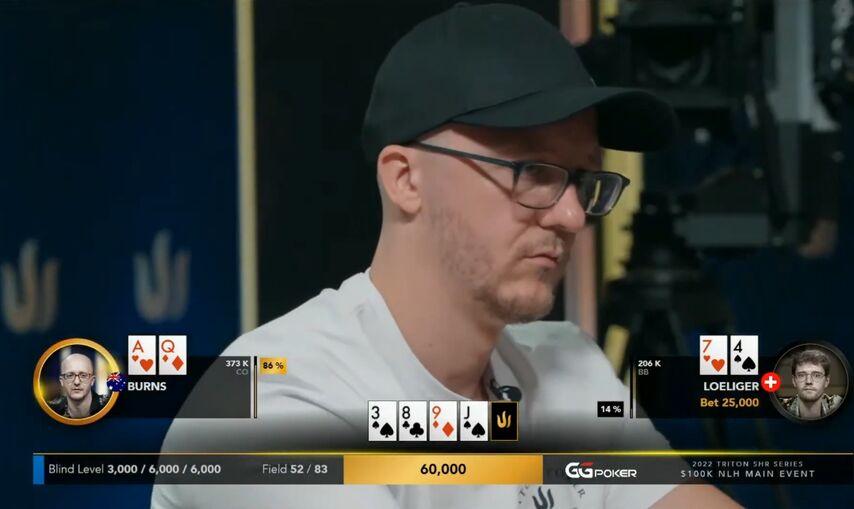
Solver in his place almost never folds AQo, and even prefers to raise with some of them. A raise requires a flush blocker.
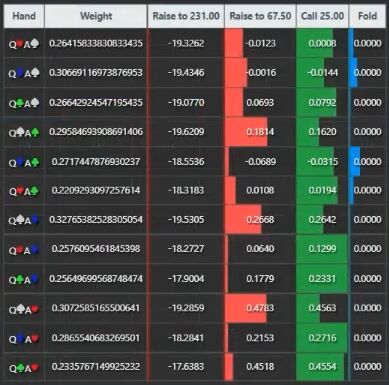
River
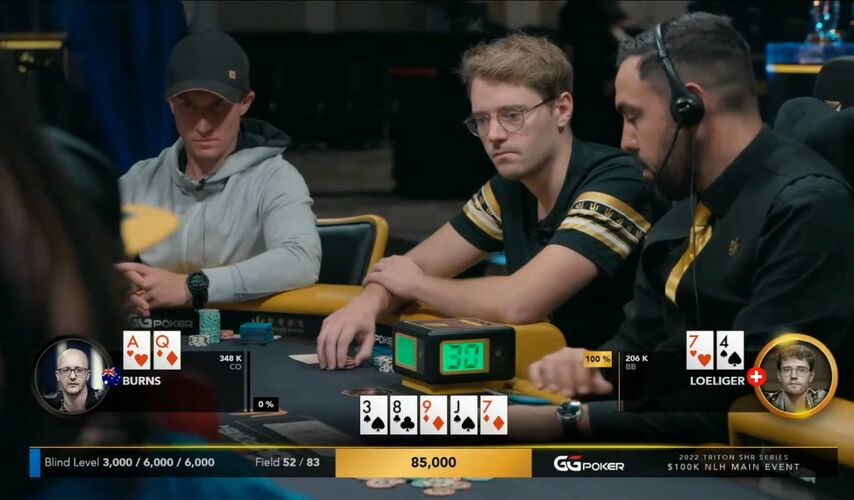
Linus hits a pair and checks.
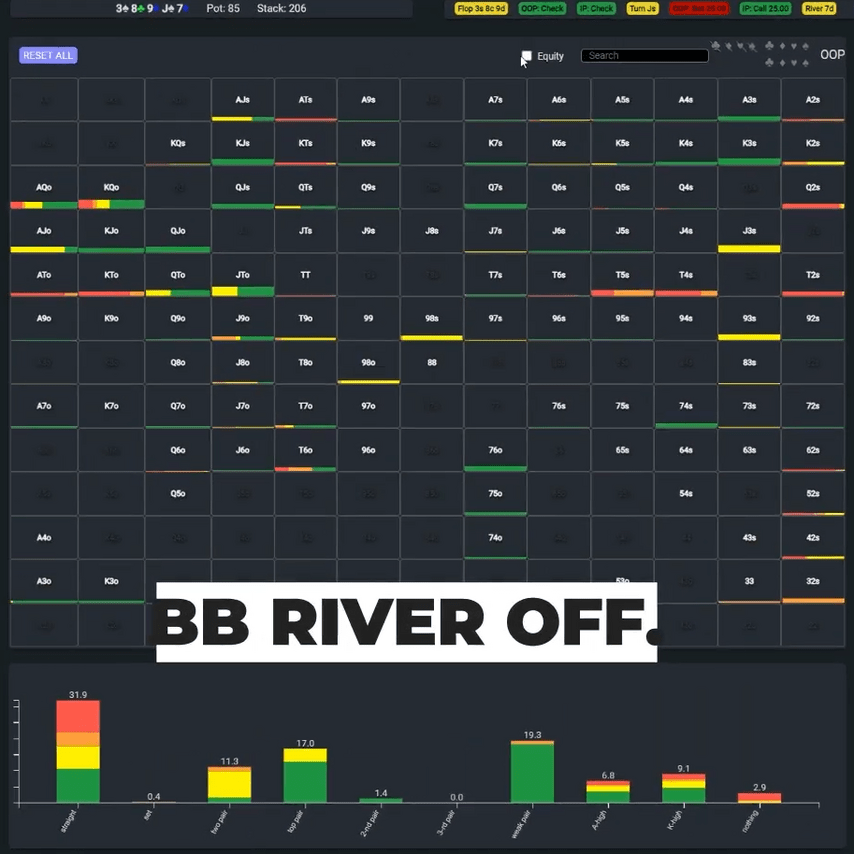
The river again changes the distribution of equity between the players – there are now four cards to a straight on the board. For the player out of position, the solver prefers to block bet, but you can also make a big bet, attacking the opponent's bluffcatchers. The hand of Linus, like all other medium strength hands, the solver checks confidently, not expecting to get called by worse hands even for a small bet. Yes, a pair of sevens has a bit of equity, but Kahle's range has weaker hands that should check behind, and Linus's range has enough unpaired hands that are more profitable to bluff than 74o.
Kahle bets 55,000 into the pot of 85,000.
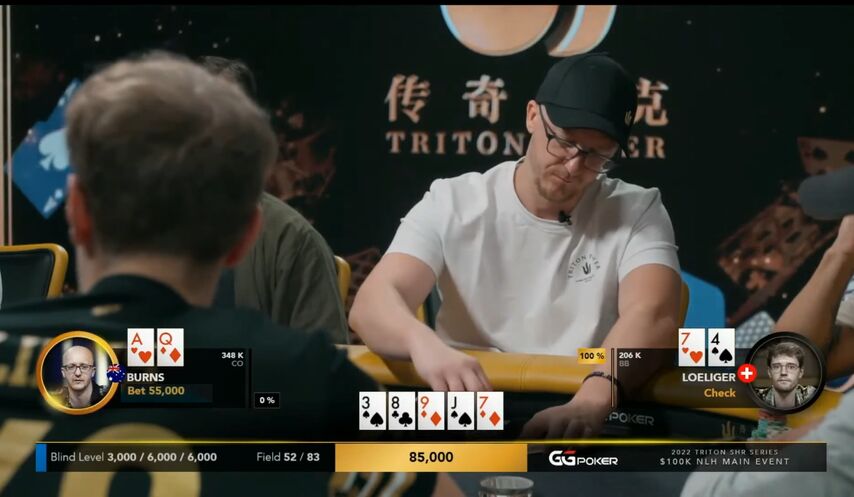
He realizes that Linus's range is saturated with one-pair hands after checking and decides to turn his ace-high into a bluff.
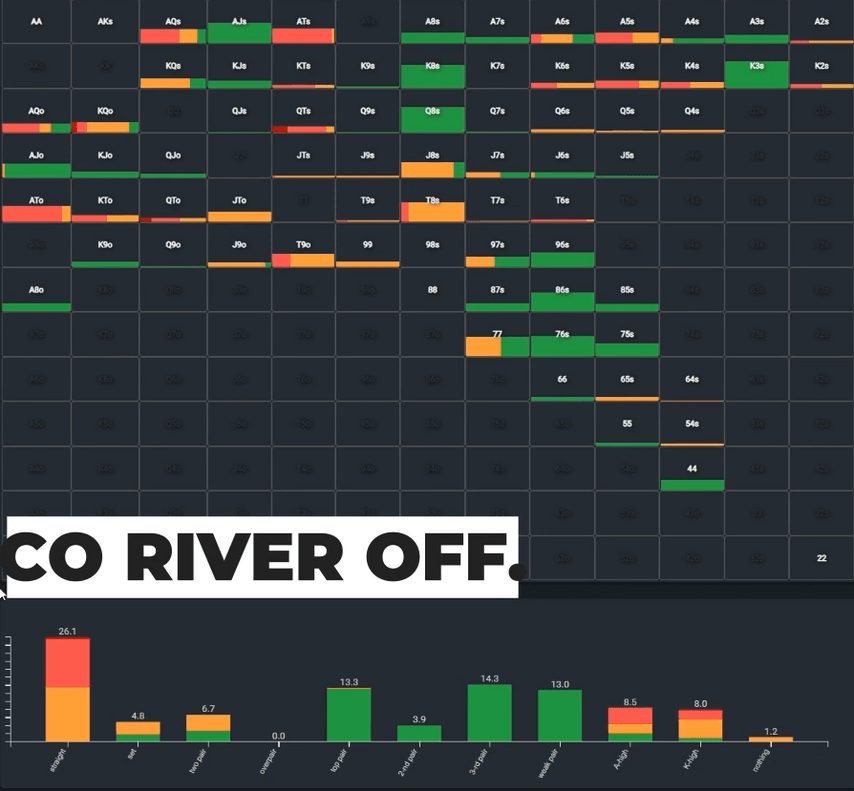
A-high is not often good for bluffs, but in this case, Kahle's decision is absolutely correct. He doesn't block Linus' folding range and needs to balance draws with Tx straights, of which there are quite a few in his range. Given that he called on the turn, he doesn't have many unpaired hands, and A-highs are definitely in the lower part of his range.
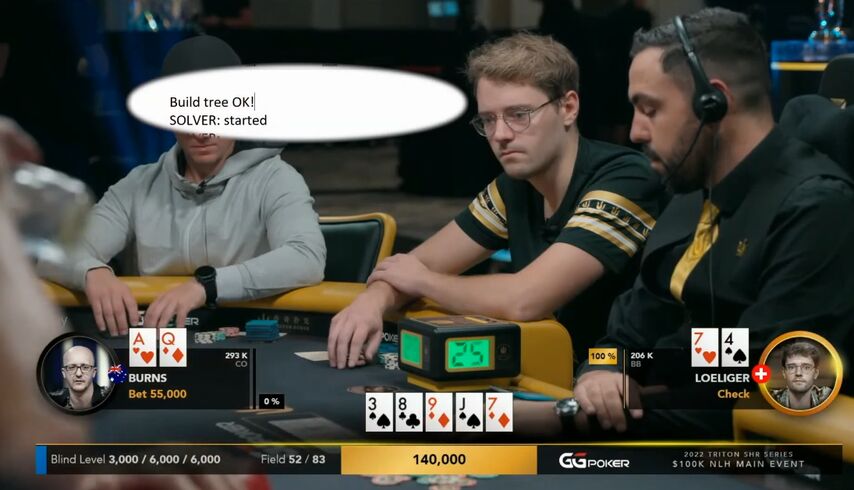
"I don't see how Linus can call here with a seven," says a commentator on the official broadcast. “A call like that would be complete madness.”
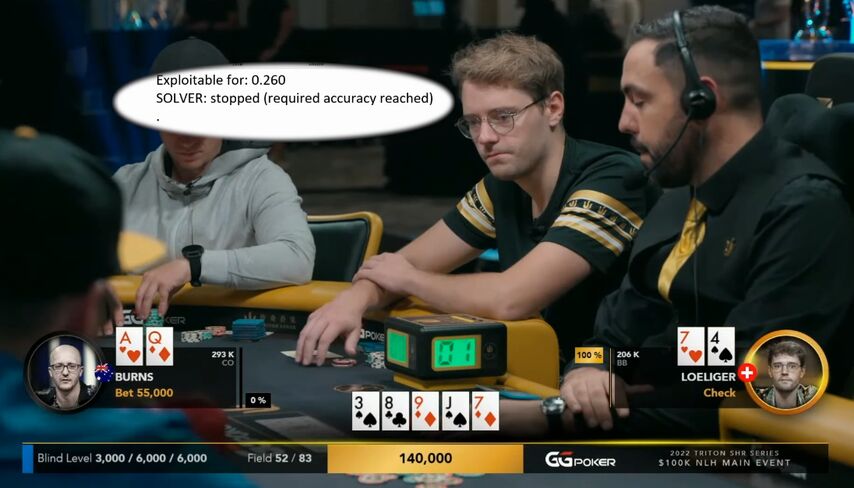
Linus calls.
– Did you call with the seven? Kahle asks.
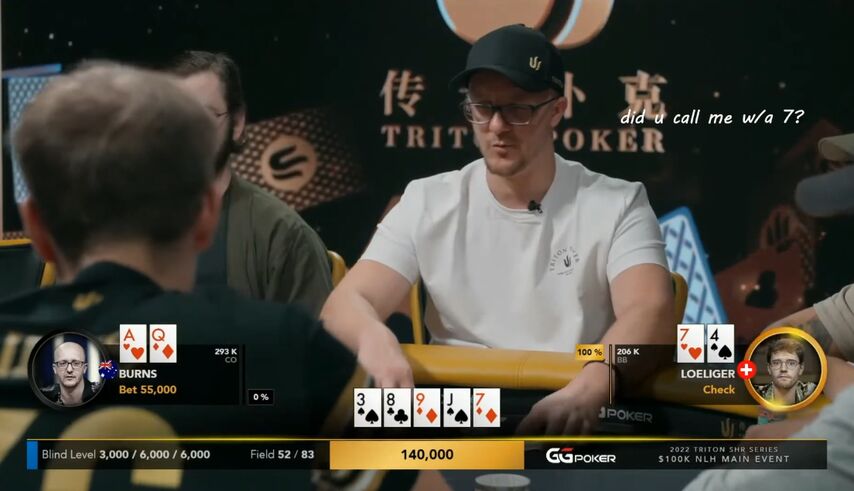
Linus silently turns over the cards.
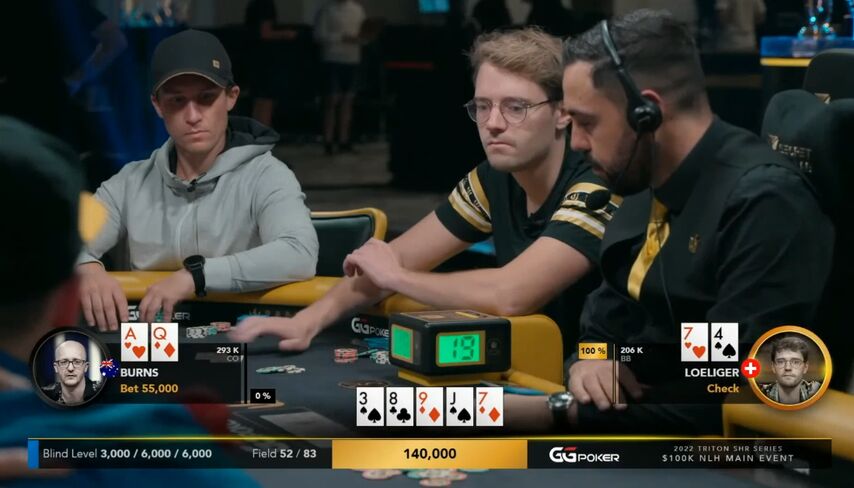
“I knew that I should just give up on such a river,” Kahle is annoyed.
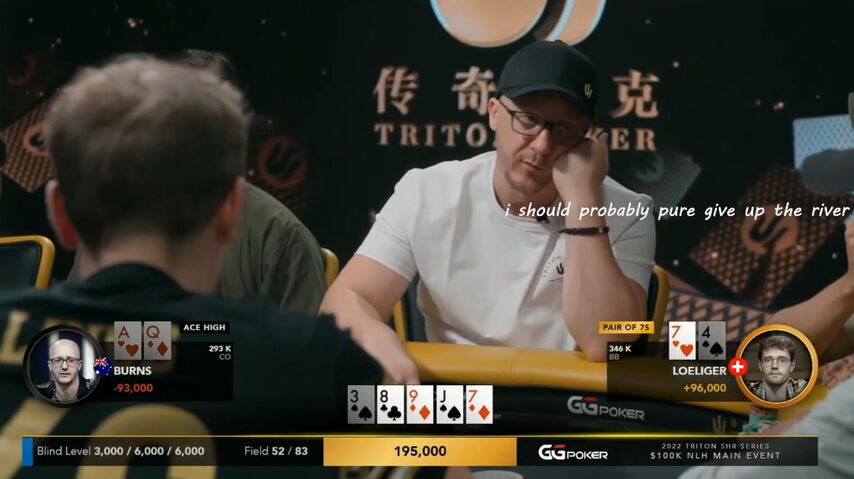
Given four cards to a straight, Kahle's betting range is very polar.
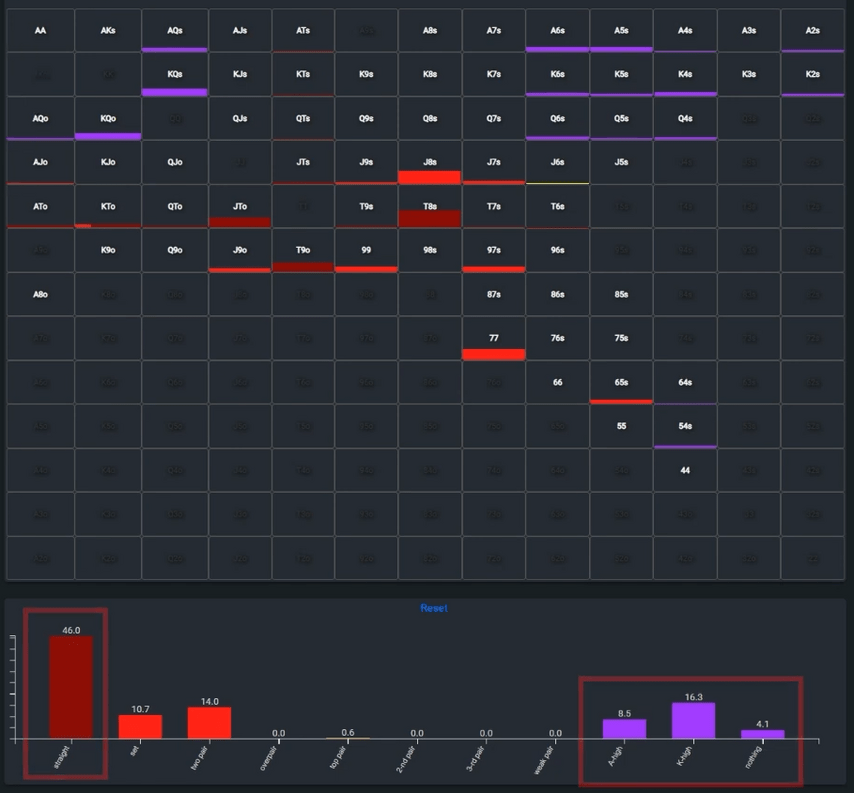
If he bluffs with enough frequency, Linus's bluffcatcher calling choices depend not on the strength of the hand, but on the presence of blockers.
Value is blocked by hands with jacks, eights or nines, since Kahle often has a ten next with a pair, which allows him to comfortably call the turn. Bluffs are unblocked by the absence of a queen or a spade. Yes, it's profitable for Kahle to bluff with a spade, since the bulk of Linus's check-folding range is not missed draws, but one-pair hands.
With Linus's hand, despite having a spade, the solver always calls.
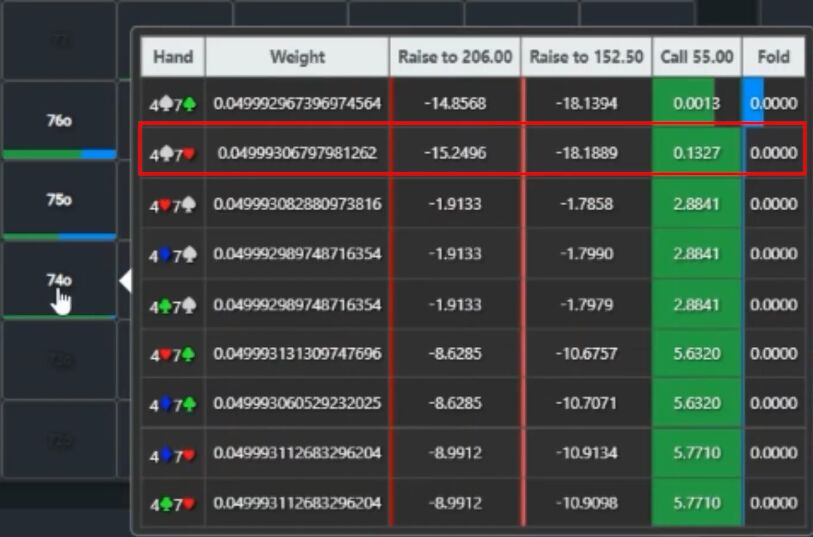
“I thought you had KQo,” Linus explains his call.
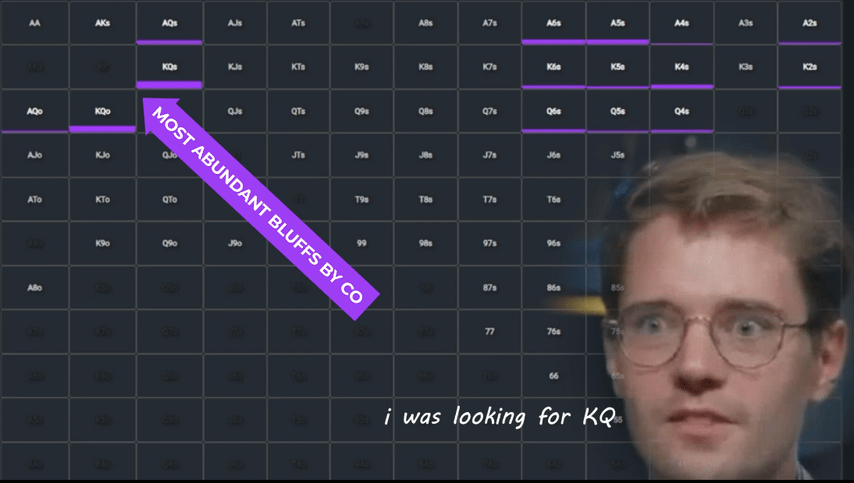
Almost right.












